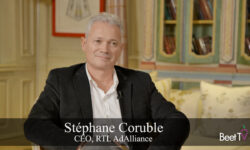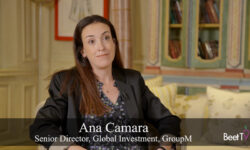LONDON, UK — In a world that seems to be speeding up, can TV operators make every second count?
James Wilhite, VP of Product, Publica, thinks they should start measuring their TV ad sales success by the second.
In this video interview with Beet.TV, Wilhite explains why.
Understanding the importance of revenue per second
With the rise of streaming, publishers now have the ability to control monetization in a different way. Wilhite emphasizes the value of considering ‘revenue per second’ when thinking about inventory and yield management.
“CPM per second is built natively into the Publica ad server, and it’s really important because a publisher is selling airtime. They’re not selling individual ad slots.
“A 15 second opportunity is not the same value as a 30 or 45 second opportunity,” he says.
Empowering publishers to maximize revenue
Looking ahead, Wilhite encourages publishers to take matters into their own hands, to question their partners and ensure they’re maximizing revenue.
“A publisher needs to ask all of their partners, are you making sure that you’re selling airtime and not individual ad slots? Are you thinking innovatively on yield? Do you have yield management tools? Do you have forecasting tools? Do you have granular reporting?” Wilhite suggests that equipping publishers with these tools is the industry’s priority heading into 2024.
Navigating the complexity of ad breaks in streaming
The industry’s tool stack is not yet sufficiently built out for the migration from linear to streaming TV ads – but it’s getting there.
“The controls are completely different and a lot more limited,” says Wilhite. He contrasts the buying and selling of ad breaks in traditional linear television, where the broadcaster knows the content, schedule and potential audience, with the Connected TV (CTV) space, where the controls available to marketers are less refined.
“It’s built on the same pipes as programmatic. So you don’t know the content title, you don’t know what you’re being served next to,” he explains, highlighting the challenge of content awareness in CTV, which also impacts competitive separation.
“Everything is built on the display infrastructure.”
However, Wilhite believes that industry progress is on the horizon. “In the near future as an industry, I think that we’re going to be able to give a marketer the same controls that they’ve had for competitive separation that they’ve gotten used to within traditional linear television.
“We’ll have the best of CTV and addressability and precise targeting.”
You’re watching “Looking Ahead: TV in Europe 2025,” a Beet.TV Leadership Summit, presented by Magnite & Publica. For more videos from this series, please visit this page.



































